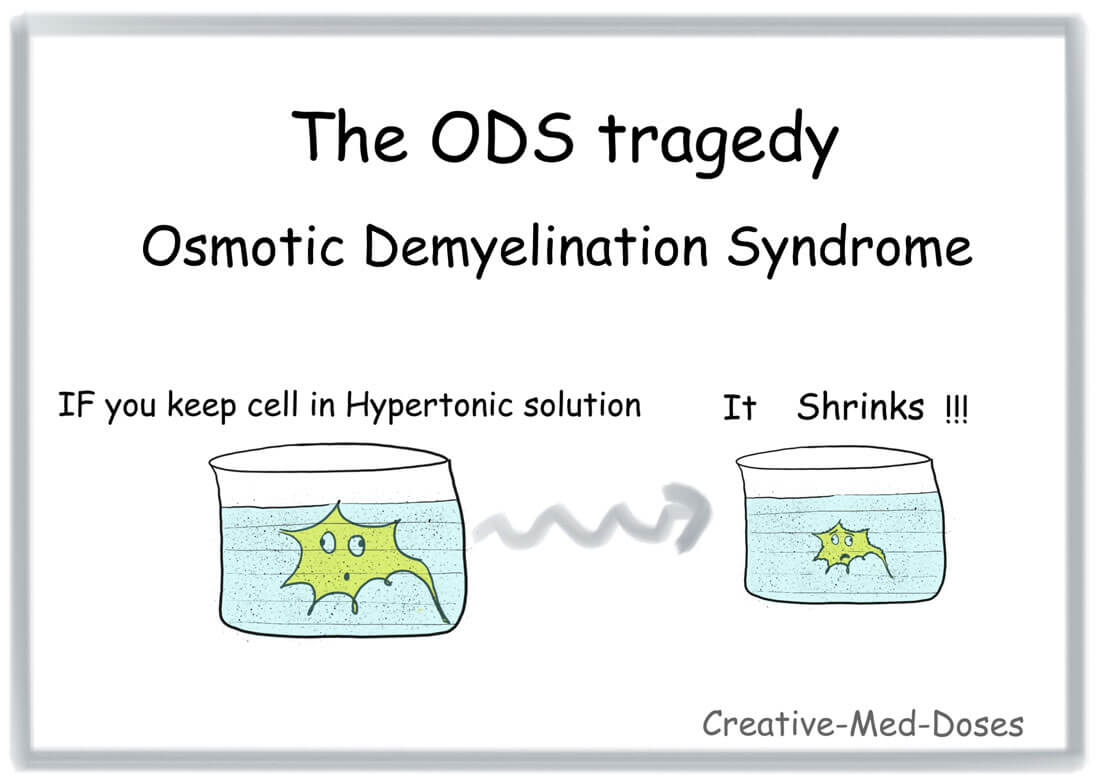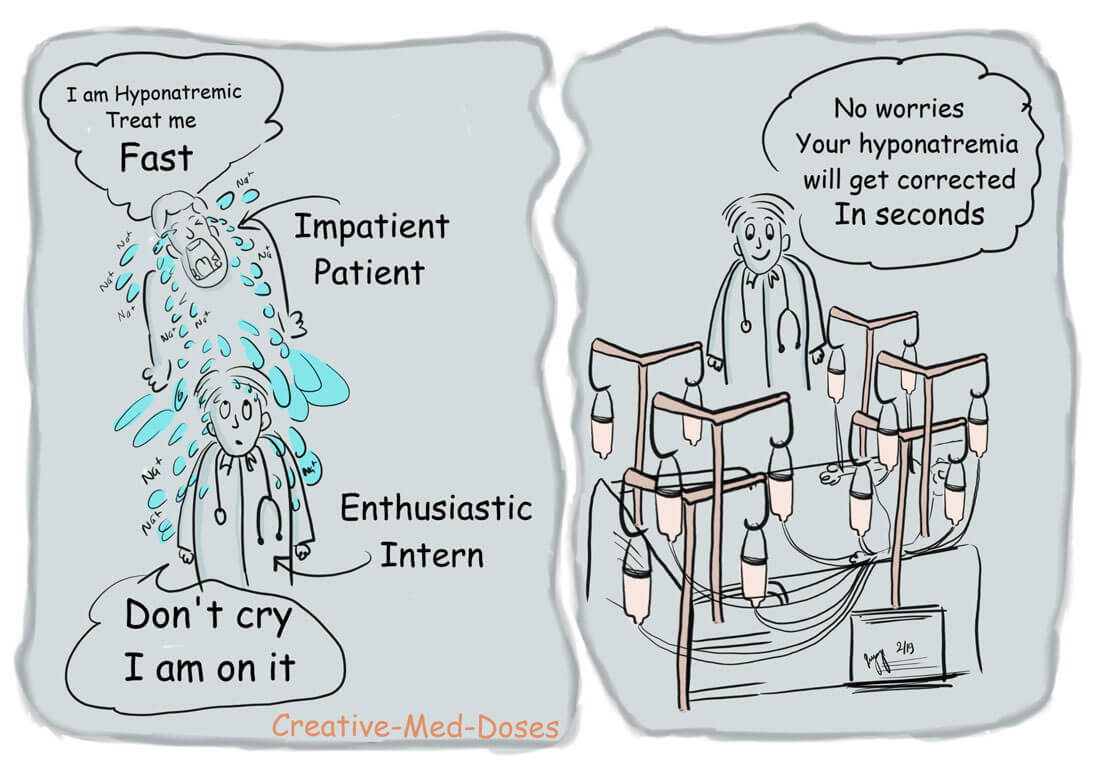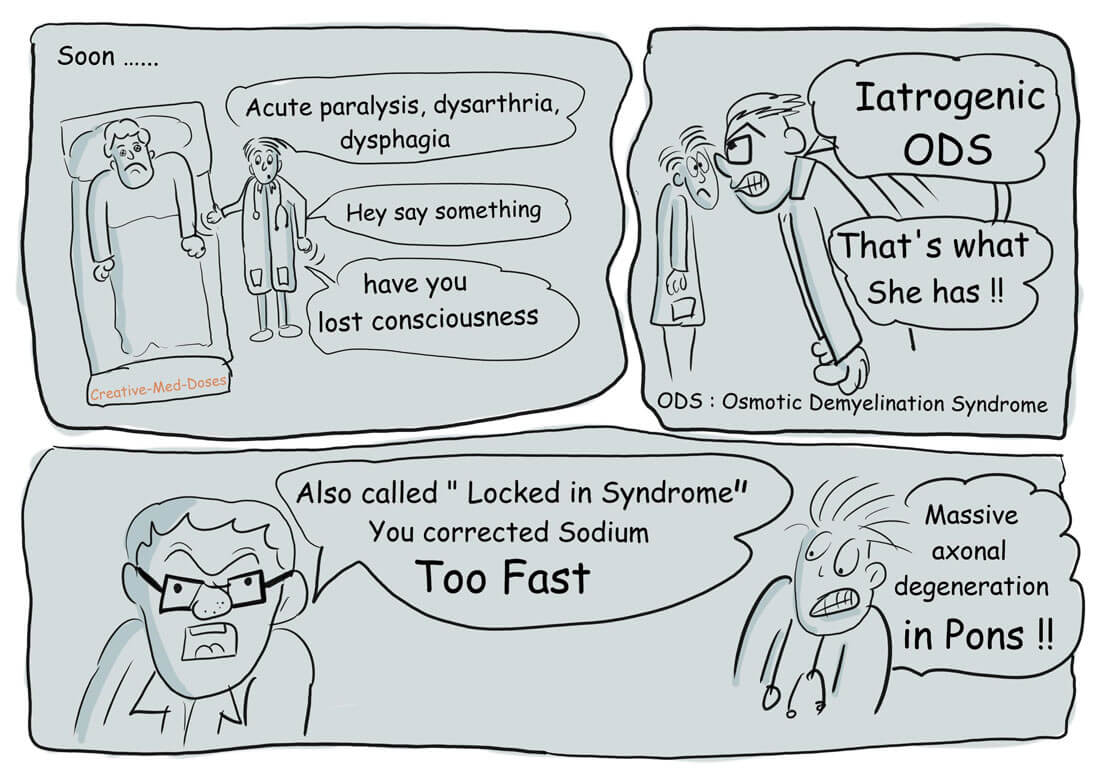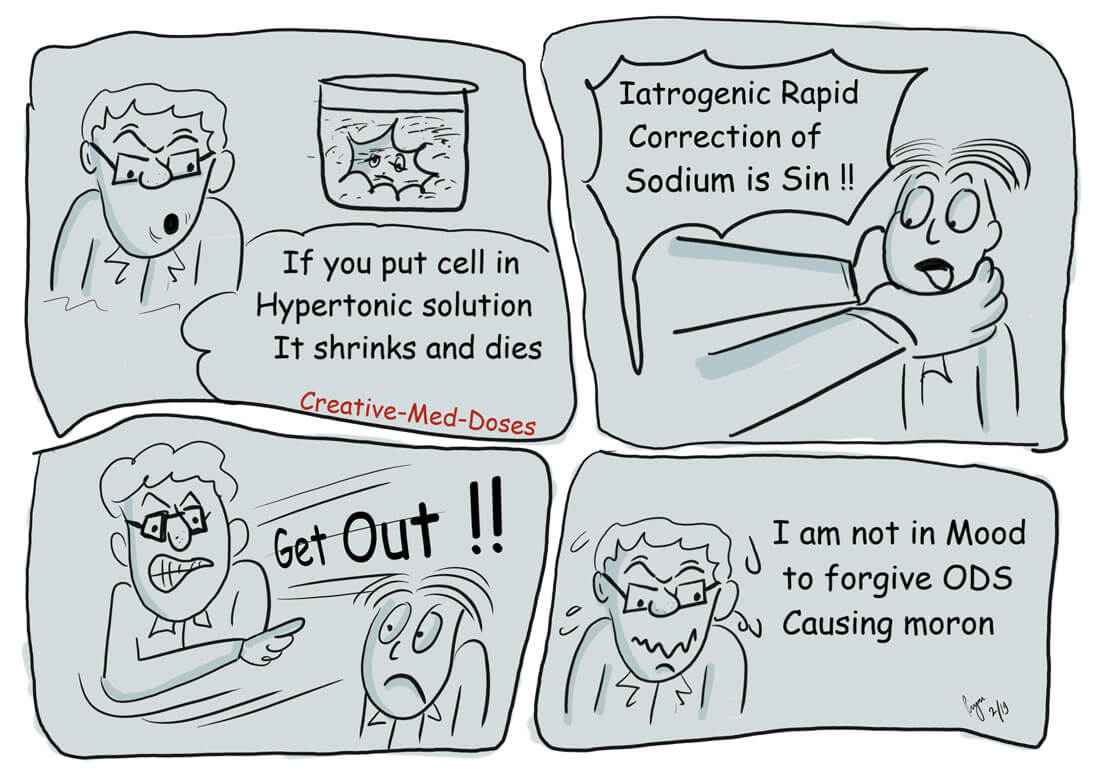ODS : Osmotic Demyelination Syndrome




- Formerly, called central pontine myelinolysis
- Caused by severe damage of the myelin sheath of nerve cells, primarily in the brainstem and typically the pons
- Due to rapid correction of hyponatremia and in liver disease.
- Also called “locked-in" syndrome.
- Shows quadriparesis, dysarthria, dysphagia and other pseudobulbar symptoms
- Prevention involves slow correction of hyponatremia; at a rate of no more than 8-12mEq/L of sodium per day
- No treatment once condition has begun